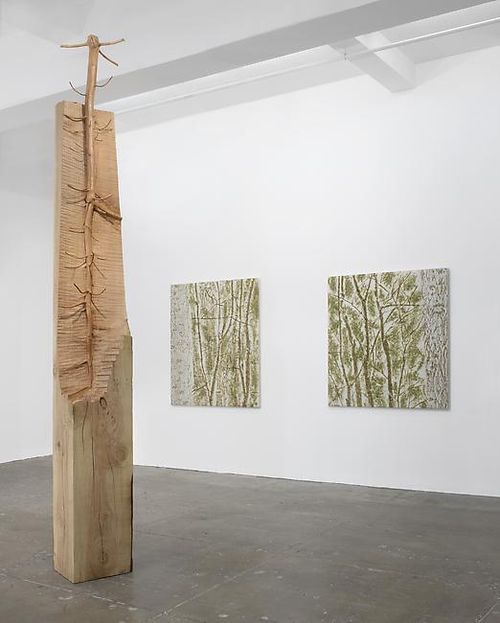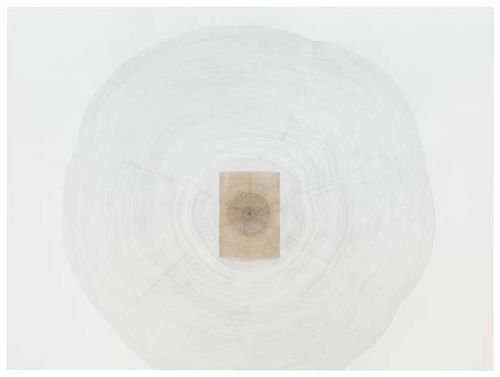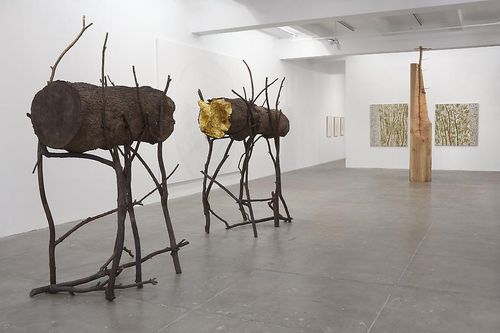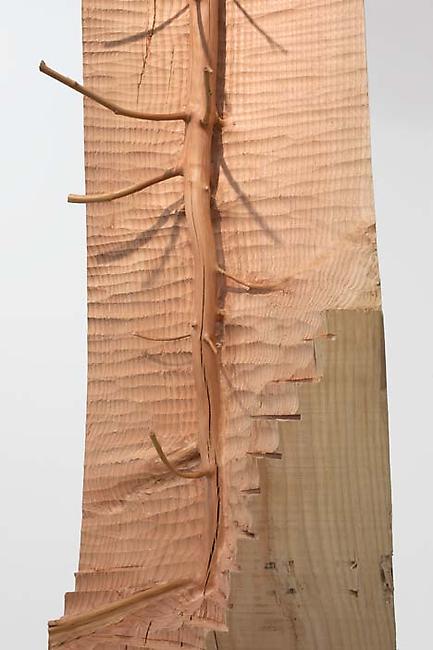Giuseppe Penone, Nel lengo (2008)
James writes:
Arte Povera was a reaction to the Italian economic miracle that followed World War II. Countering the industrialization of the 1950s and early '60s, Italian artists turned to "poor" materials and craft. The results took many forms, not all of them lasting, but Giuseppe Penone (b. 1947) has endured for his unique take on nature.
Raised on a family farm outside Turin, the home of both Fiat and Slow Food, Mr. Penone connects fingerprints, tree rings and marble veins in a sculptural riff on the parlor game "Animal, Vegetable, Mineral." At Goodman are works from 1968 to the present: photographs; radiographs; vegetal pigment on canvas; grass juice on paper; acacia thorns on silk; and sculptures in wood, bronze and—whew!—white Carrara marble.
Giuseppe Penone, Propagazione (2011)
Mr. Penone starts with diverse materials and draws out their intrinsic similarities. In the spare "Propagazione" (2011), a fingerprint's swirls are extended by concentric ink lines to form a drawing, 13 feet across, that resembles the rings of a giant tree. The stagy "Tra…" (2008) is a bronze sculpture made to look like the broken halves of a tree trunk. The trunk splits at eye level, allowing just enough space to walk through. It's a long setup for a so-so punch line.
At left: Giuseppe Penone, Tra... (2008)
Far better is "Nel legno" (2008), where Mr. Penone carves around the growth rings of a milled block to reveal the remnants of the younger tree within—the process uncovering the true nature of the product.
Detail view: Giuseppe Penone, Nel lengo (2008)
Details:
Giuseppe Penone
Marian Goodman Gallery
24 W. 57th St., (212) 977-7160 Through June 16
--adapted from "Course of Nature and Faust," The Wall Street Journal, June 8, 2012



